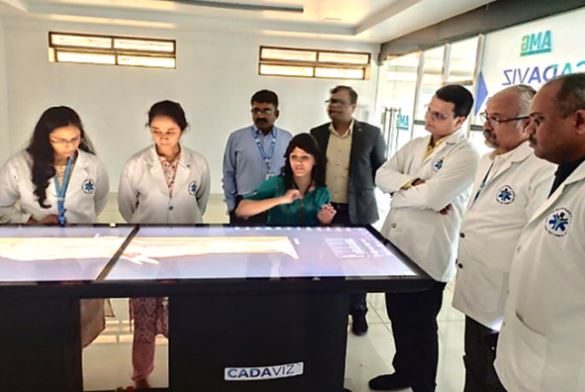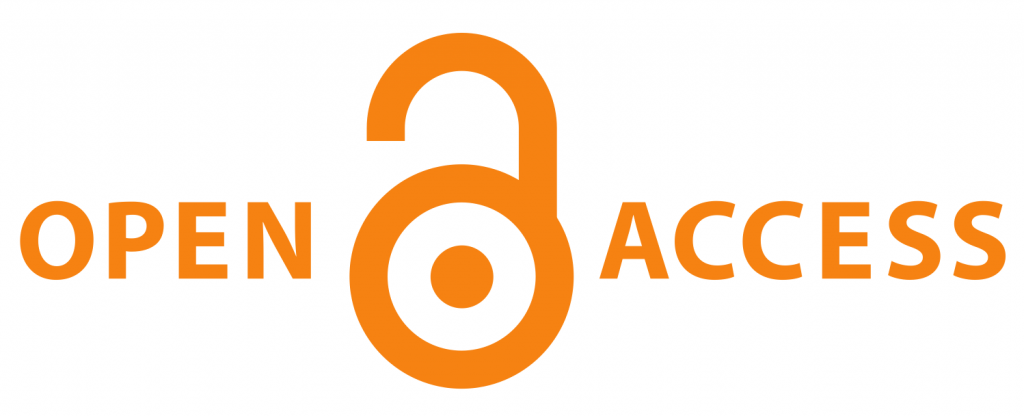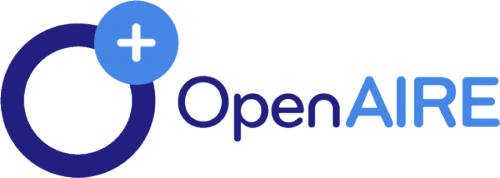CADAVIZ - Expanding Digital Horizons of Anatomy and Physiology in Ayurveda - A Review
DOI:
https://doi.org/10.21760/jaims.10.3.42Keywords:
Anatomy, Ayurveda, CADAVIZ, Kriya Sharir, Rachana Sharir, Virtual dissection table (VDT)Abstract
Medical education is transforming continuously with respect to its teaching learning processes. The application of newer techniques, digitization made with regards to instruments and equipment’s, and advancement in the use of technology aids for various purposes in medical education. One of the primary challenges faced by Ayurveda instructors is with the teaching learning of the fundamental subjects like anatomy-Rachana Sharir and physiology-Kriya Sharir. More over replicating the hands-on experience of practical exposure, including activities such as cadaver dissections, bone demonstrations, histology slide examinations, etc., which foster interactive communication with students and enhance their communication and clinical skills is difficult. In order to make teaching and learning sessions more engaging educators need to incorporate educational technologies into everyday teaching methodologies. The recent approach of digital revolution makes it possible to solve the problems creatively. Competency based medical education and OBE objective-based education which are being used nowadays are based on the hierarchical development of all taxonomic levels (domains) for students, while imparting knowledge. CADAVIZ, a virtual dissection table (VDT), is one such instrument which facilitates the educators and helps them to fulfill their teaching objectives. In this article we review the instrument and give a brief account of its utilities and applications with respect to Ayurveda. CADAVIZ is the world’s first simulation table for Ayurveda. It boasts of presenting in a first of its kind, a table with a detailed account of human anatomy from an ayurvedic prospective.
Downloads
References
Arráez-Aybar LA, Sánchez-Montesinos I, Mirapeix RM, Mompeo Corredera B, Sañudo-Tejero JR. Relevance of human anatomy in daily clinical practice. Ann Anat. 2010;192(6):341–8. doi:10.1016/j.aanat.2010.05.002.
Smith CF, Mathias HS. What impact does anatomy education have on clinical practice? Clin Anat. 2011;24(1):113–9. doi:10.1002/ca.21065.
Singh R, Yadav N, Pandey M, Jones DG. Is inadequate anatomical knowledge on the part of physicians hazardous for successful clinical practice? Surg Radiol Anat. 2022;44(1):83–92. doi:10.1007/s00276-021-02875-7.
Rosario MG. Virtual dissection table: A supplemental learning aid for head and neck anatomy in a physical therapy program. Sch Int J Anat Physiol. 2024;7(2):17–24. doi:10.36348/sijap.2024.v07i02.002.
Varner C, Dixon L, Simons MC. The past, present, and future: A discussion of cadaver use in medical and veterinary education. Front Vet Sci. 2021;8:720–40. doi:10.3389/fvets.2021.720740.
Changmai M, Gohain K. Cadaveric dissection and changing perceptions in learning anatomy. J Datta Meghe Inst Med Sci Univ. 2019;14(4):365. doi:10.4103/jdmimsu.jdmimsu_49_18.
Neri I, Cercenelli L, Marcuccio M, Lodi S, Koufi F-D, Fazio A, et al. Dissecting human anatomy learning process through anatomical education with augmented reality: AEducAR 2.0, an updated interdisciplinary study. Anat Sci Educ. 2024;17:693–711. doi:10.1002/ase.2389.
Smith J, Johnson A. Enhancing head and neck anatomy education through technology. J Med Educ. 2019;12(2):45–56.
Jadhav HR. Charaka Samhita: Handbook on Ayurveda. Vol 1 2. Varanasi: Chaukhambha Orientalia; 2004.
Patwardhan K. The history of the discovery of blood circulation: Unrecognized contributions of Ayurveda masters. Adv Physiol Educ. 2012;36:77–82. doi:10.1152/advan.00123.2011.
CADAVIZ Handling Guidelines.
CADAVIZ User Manual Version 1.6. Last Updated: 21 March 2024.
CADAVIZ Table v1.0.2 Release Notes. Date: 02-05-2024.
Azer SA, Eizenberg N. Do we need dissection in an integrated problem-based learning medical course? Perceptions of first- and second-year students. Surg Radiol Anat. 2007;29(2):173–80. doi:10.1007/s00276-007-0180-x.
Patel SB, Mauro D, Fenn J, Sharkey DR, Jones C. Is dissection the only way to learn anatomy? Thoughts from students at a non-dissecting based medical school. Perspect Med Educ. 2015;4(5):259–60. doi:10.1007/s40037-015-0206-8.
Cowan M, Arain NN, Assale TSA, Assi AH, Albar RA, Ganguly PK. Student-centered integrated anatomy resource sessions at Alfaisal University. Anat Sci Educ. 2010;3(5):272–5. doi:10.1002/ase.176.
Alyafi MM, AlAmodi AA, Bernhard HJ, Juurlink, Ganguly PK. How the dissection laboratory facilitates integration of learning: Presence of abdominal aortic aneurysm with a large intracardiac thrombus: A rare cadaver finding. Int J Angiol. 2012;21(2):77–80. doi:10.1055/s-0032-1315625.
Huitt TW, Killins A, Brooks WS. Team-based learning in the gross anatomy laboratory improves academic performance and students’ attitudes toward teamwork. Anat Sci Educ. 2014;8(2):95–103. doi:10.1002/ase.1460.
Rosario MG. Virtual dissection table: A supplemental learning aid for head and neck anatomy in a physical therapy program. Sch Int J Anat Physiol. 2024;7(2):17–24. doi:10.36348/sijap.2024.v07i02.002.
Johnson KB, Wei WQ, Weeraratne D, Frisse ME, Misulis K, Rhee K, et al. Precision medicine, AI, and the future of personalized healthcare. Clin Transl Sci. 2021;14:86–93. doi:10.1111/cts.12884.
Sudha K, James J, Natarajan PS, Sundara PS. Unveiling challenges in cadaveric dissection for medical education – a study of student perspectives. Eur J Clin Exp Med. 2024;22(1):102–6. doi:10.15584/ejcem.2024.1.19.
Sugand K, Abrahms P, Khurana A. The anatomy of anatomy: A review for its modernizations. Anat Sci Educ. 2010;3:83–93. doi:10.1002/ase.139.
Iwanaga J, Loukas M, Dumont AS, Tubbs RS. A review of anatomy education during and after the COVID‐19 pandemic: Revisiting traditional and modern methods to achieve future innovation. Clin Anat. 2021;34(1):108–14. doi:10.1002/ca.23655.
Bairamian D, Liu S, Eftekhar B. Virtual reality angiogram vs 3-dimensional printed angiogram as an educational tool—a comparative study. Neurosurgery. 2019;85(2):E343–9. doi:10.1093/neuros/nyz003.
Bork F, Stratmann L, Enssle S, Eck U, Navab N, Waschke J, Kugelmann D. The benefits of an augmented reality magic mirror system for integrated radiology teaching in gross anatomy. Anat Sci Educ. 2019;12(6):585–98. doi:10.1002/ase.1864.
Duncan-Vaidya EA, Stevenson EL. The effectiveness of an augmented reality head-mounted display in learning skull anatomy at a community college. Anat Sci Educ. 2020;14(2):221–31. doi:10.1002/ase.1998.
Ha JE, Choi DY. Educational effect of 3D applications as a teaching aid for anatomical practice for dental hygiene students. Anat Cell Biol. 2019;52(4):414–8. doi:10.5115/acb.19.224.
Kumar A. Role of information technology in Ayurveda. Int J Ayurveda Res. 2023;4:197–202. doi:10.4103/ijar.ijar_147_23.
Virtual human dissection table brochure. Cadaviz. 2023. Available from: www.cadaviz.com















